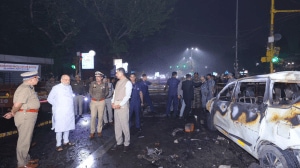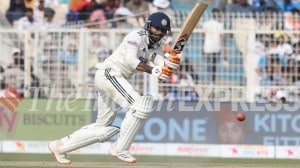Take-off time
The liberalisation of the Indian economy, apart from aiding global integration was also responsible for the sudden spurt in the number of fo...

The liberalisation of the Indian economy, apart from aiding global integration was also responsible for the sudden spurt in the number of foreign arrivals, both for business and pleasure. This gave a well-deserved boost to the aviation industry in India.
Considering the fact that aviation as an industry, has grown tremendously, it is but natural that myriad jobs have also generated in the bargain.
Job options:
Operations: The job profile here primarily centres around flying the aircraft on scheduled routes and ensuring the safety of the passengers while in air. Personnel required for operations include pilots, in-flight crew like air hostess, stewards and flight engineers.
Engineering: Incumbents taking up engineering should have either specialised in mechanical, aero-nautical, electronics or avionics engineering. The engineer, before a plane takes off, certifies that it is airworthy, has been maintained well and is capable of proper functioning. Maintenance includes activities like overhauling the grounded aircraft at airports, hangars and workshops, replacing plane parts, treating corrosion and checking tyres, instruments, wheel flaps. A mechanical engineer looks after the servicing and overhauling of engines of an aero-nautical engineer looks after the maintenance of electrical and electronic equipment. Flight engineers look after the internal and external checks and system checks while air-borne, refuelling, pre-flight checking.
Commercial: Commercial operations comprise jobs where customer service is involved. This includes activities like ticketing, reservations and handling passengers and cargo at counters. In fact, the over-all administration is handled by the commercial crew of an airline. Apart from these, airlines also have operations like accounts, marketing and public relations. Trained personnel are required to take up positions like planning managers, purchase managers and materials managers.
Emoluments: The aviation sector pays handsome salaries and perks. Based on whether the airline belongs to the private or public sector, the pay packet varies. In the public sector-owned airlines, a trainee pilot can get around Rs 4,000 or more per month and on confirmation as a first officer, he can get around Rs 8,000. The perks include housing, medical and out-station allowances and concessional or even free air passages. In the private sector, a pilot can get around Rs 20,000 and more, excluding perks. Air hostesses and flight pursers start with around Rs 8,000 in the public sector and the private airlines pay around Rs 15,000 exclusive of perks, depending on the airline that the incumbent works for.
Training: An incumbent interested in becoming a commercial pilot should be 16 years of age and must have passed Class X. He must also apply for a Student Pilot’s License (SPL). At this juncture, he has to give a medical certificate and a bank guarantee of Rs 10,000. To get training for SPL, the candidate can train in any of the flying institutions in the country, or can even get trained abroad. The training subjects cover air regulation, aviation, weather studying, air navigation and its technical know-how. After this, the candidate has to clear the medical fitness test conducted by the Air Force Medical Establishment, New Delhi, or the Institute of Aviation Medicine, Vimanpura, Bangalore. After this he is entitled to get an SPL.
Next, the incumbent has to get his Private Pilot’s Licence (PPL). After getting SPL and clearing the 10+2 with physics, mathematics and chemistry, the incumbent receives training at he various flying clubs in the country. An incumbent should fly for a minimum of 60 hours in the flying club. This includes solo, dual and cross-country flying. After this, an exam has to be cleared in aviation subjects like navigation and meteorology.
Training for a Commercial Pilot’s License (CPL) requires the incumbent to spend about 190 hours in solo and cross-country flying and some hours of night flying. After this, a written examination has to be cleared. Regarding helicopter pilots, they need to have a Commercial Helicopter Pilot’s License (CHPL). The CHPL can be procured after the pilot has cleared 40 hours of flying including solo and then passed a written examination on aviation subjects. After this, the incumbent will get a Private Helicopter Pilot’s License (PHPL). Another 60 hours of flying and a written test makes him eligible for CHPL.
It should be remembered that the pilots are trained for different types of aircraft. If they have license for one type, they cannot fly another type until they have been provided such license.
Engineers are trained in a manner that they are well-equipped to handle some of the most sophisticated aircrafts. In aircraft maintenance, the engineer is taught avionics and the art of maintaining an aircraft. The examination conducted by DGCA covers the mechanical stream Category A and Category C of the aircraft maintenance engineering license examination. Avionics covers Category E (electrical), I (instrumentation), and R (radio).
The eligibility for the course is a Class XII with physics, chemistry and mathematics with a first class. The aircraft maintenance course can be pursued at institutes like the Delhi Flying Club, New Delhi, and the Hindustan Institute of Engineering Technology, Chennai. Another way of getting trained in engineering is to acquire four years of experience in some airline and then take up the examination conducted by DGCA. It should, however, be remembered that engineering training differs based on the kind of aircraft.
- 01
- 02
- 03
- 04
- 05































